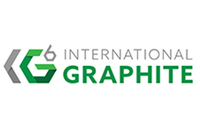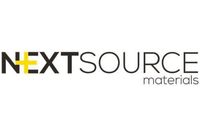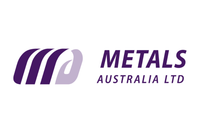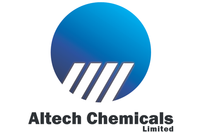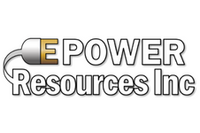Dr. Pieter J. Barnard on Canada Carbon's Miller Graphite
Former GrafTech International exec Dr. Pieter J. Barnard discusses Canada Carbon, whose board of directors he recently joined.
Dr. Pieter J. Barnard’s name may not be familiar to graphite investors, but those interested in the space will almost definitely have heard of GrafTech International, the company where he worked for over four decades.
GrafTech, an indirect, wholly owned subsidiary of Brookfield Asset Management (TSX:BAM.A,NYSE:BAM) since August of this year, has offered graphite material solutions to customers across a variety of industries and end markets for over a century. Barnard spent his entire career at GrafTech and its predecessor UCAR Carbon, serving in a wide variety of roles before retiring in November 2014. During that time he gained an intimate knowledge of the raw materials and graphite products used in the world today.
Since his retirement, Barnard has kept busy as a consultant in the graphite, chemical and metallurgical industries, and was recently appointed to Canada Carbon’s (TSXV:CCB) board of directors. The Investing News Network (INN) sat down with Barnard to learn more about the graphite industry and why he’s interested in Canada Carbon, whose key asset is the Quebec-based Miller hydrothermal lump/vein graphite project. Here’s what he had to say.
INN: You’ve held key roles in the graphite industry for over 40 years, and I imagine many companies are keen to work with you. What drew you to Canada Carbon?
PB: For both synthetic and natural graphite, the quality of the raw material is extremely important, and in my opinion, this is where Canada Carbon has a great benefit over many of the other suppliers.
Basically what Canada Carbon will be mining is high-quality vein graphite, which is the scarcest type of natural graphite. As demand for high-quality graphite increases, it will be very important to find more of it.
Vein graphite is typically found in Sri Lanka, which carries geopolitical risk. Canada Carbon has a benefit in that regard as its Miller project is in a part of Quebec with full infrastructure in place, and is readily accessible to North American markets.
INN: How does vein graphite differ from other types of natural graphite (amorphous and flake)?
PB: The vein graphite that Canada Carbon will be mining is very high in carbon content, so it requires limited upgrading to get to carbon purity levels of 99 percent and above. And with a little bit of heat treatment, they’re able to get nuclear-grade graphite. Thermal upgrading has consistently yielded graphite purities of 99.9995 to 99.9998 percent.
The far more common flake graphite has lower carbon content and a lot more impurities — not to mention amorphous. So in the case of vein graphite, the number of processing steps is fewer and the processing costs are lower.
INN: What are some of the benefits of having very high-purity graphite?
PB: With natural graphite, if you can get those high levels of purity, there are numerous potential applications because the product is lower cost than synthetic graphite.
I believe Canada Carbon is in an outstanding position to supply natural graphite for the production of the “wonder material” graphene and some of the newer, technologically advanced applications. The market demand for some of these applications is growing very fast — for example, lithium-ion batteries, supercapacitors, pebble bed nuclear reactors, conductive coatings and graphite foils, which are used in the electronics and fuel cell industries. These new technologies will drive demand for ultra-high purity graphite.
That does not necessarily mean that Canada Carbon will sell to all of those marketplaces, but these technologies will consume a lot of the natural graphite that’s available. Canada Carbon will be able to focus on niche markets where it can get the highest prices for the quality of its product.
INN: From what you’ve said, it sounds like the quality of Canada Carbon’s graphite will allow it to compete with synthetic graphite. In brief, can you explain what synthetic graphite is?
PB: Synthetic graphite a product that is made from petroleum or pitch needle cokes, which are produced from very high-quality decant oil.
Prices for synthetic graphite are typically set once a year, and are driven by the market. The industry is very cyclical because it’s largely driven by the metallurgical and oil industries. You’ve got years where demand is very strong and supply of high-quality products is tight, and years like the last few where there’s overcapacity in the industry, which puts a lot of pressure on prices.
Typically, synthetic graphite is sold in annual contracts, especially in the steel industry.
INN: Do you see end users who need synthetic graphite being open to making the switch to natural graphite?
PB: Absolutely. To give you a good example, just look at lithium-ion batteries, where to a large extent people used synthetic graphite before. Some large carmakers are now starting to look at synthetic and natural graphite blends — say 50 to 60 percent synthetic and the rest natural. There’s even an opportunity in my opinion that ultimately it could all be natural, depending on the availability of good-quality natural graphite.
Nuclear graphite was all synthetic, but people have come to grips with the idea that ultra-high-quality natural graphite would be a good replacement for synthetic graphite in the balls used in pebble bed nuclear reactors — it is preferred both from performance and price considerations. The current “recipe” for the graphite matrix used for the pebbles is 60 percent natural graphite, 20 percent synthetic graphite and 20 percent resin binder.
Bottom line, it’s a question of quality and purity of product, and here again the product that Canada Carbon will be supplying is very pure and very high quality. It’s also a question of cost. Natural graphite would be lower cost than synthetic graphite, and even has some characteristics that improve its performance when compared to synthetic graphite.
INN: Miller is also interesting in that it contains marble. In fact, Canada Carbon just signed a $13.75-million contract to sell it. In the long run, will marble production greatly benefit the company?
PB: We look at these marble credits as “marbleous.” If you mine graphite there are other minerals that come with it, and if you sell these by-products, it obviously helps to generate some cash. That will help to reduce the cost of mining the graphite. That’s a great business model as far as I’m concerned.
INN: I haven’t heard of marble credits at any other graphite projects. Why do you think that is?
PB: I think that generally speaking a lot of the graphites are part of skarn deposits, so they don’t really have that sort of secondary credit. The other types of graphite are not associated with the quantities and quality of the marble at Miller. This is very much associated with the vein type of graphite.
INN: That all sounds exciting. Can you tell me what catalysts investors should watch for in terms of Canada Carbon and Miller?
PB: Canada Carbon has already announced the commissioning of resource estimates for graphite and marble at Miller, as well as a preliminary economic assessment.
The company is also waiting on ASTM designation of the Miller graphite as a reference standard for natural graphite in nuclear applications. ASTM standards are very well recognized nationally and internationally, and Miller would be the first natural graphite ever to receive ASTM designation. If successful, all other natural graphites intended for nuclear applications would be compared to Canada Carbon’s. In my opinion that would be a big selling point for Canada Carbon.
INN: What about the broader graphite market? Can you speak on that as we head into 2016?
PB: As far as synthetic graphite is concerned, the global market is still very, very tough. It’s because of the downturn in the steel industry and the overcapacity that exists in the world, as well as a lot of steel and graphite inventory in the system. But people are starting to see signs of a recovery, and the feeling is that by 2017 we’ll see some strong demand for synthetic graphite again.
On the natural graphite side, it’s a different story. The demand has not been strong in the past because of the limited number of possible applications, and the high cost for investment in technology to upgrade the natural graphite. Because of all the new applications that are being developed, as well as investments in equipment to upgrade natural graphite, I can see that 2016 will be better than last year.
In fact, between now and 2020, double-digit growth is predicted for some of the new applications, and in certain segments growth as high as 30 percent per annum. This, obviously, will put a real strain on the supply of high-quality natural graphite. There will not be enough natural graphite, and there will be a need for new mines to be opened up to meet demand. Prices for high-quality natural graphite are likely to increase as demand surges and supply tightens.
The bottom line is that there are many new applications that will need natural graphite. People are getting very, very excited about natural graphite, and I think as more and more people understand what new products it will be used to create, it’s going to become very attractive to investors.
Securities Disclosure: I, Charlotte McLeod, hold no direct investment interest in any company mentioned in this article.
Editorial Disclosure: Canada Carbon is a client of the Investing News Network. This article is not paid-for content.
The Investing News Network does not guarantee the accuracy or thoroughness of the information reported in the interviews it conducts. The opinions expressed in these interviews do not reflect the opinions of the Investing News Network and do not constitute investment advice. All readers are encouraged to perform their own due diligence.
